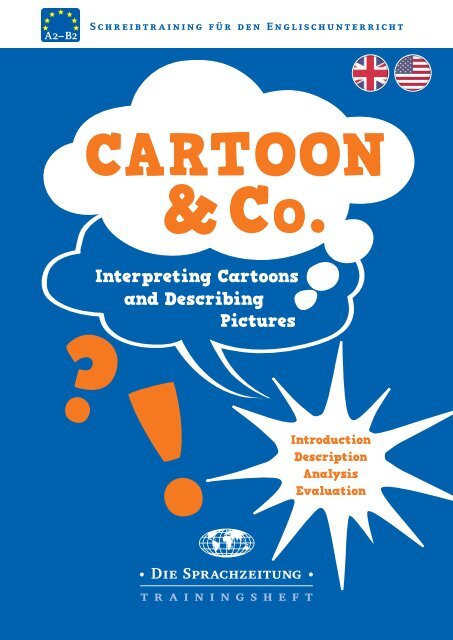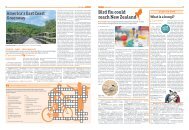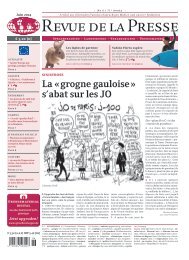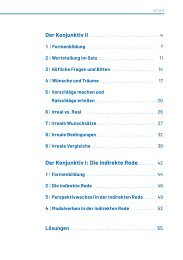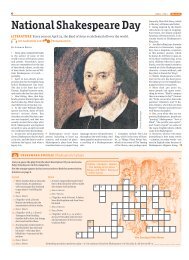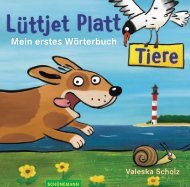Cartoon & Co. – Interpreting Cartoons and Describing Pictures
Cartoons interpretieren, Bilder beschreiben – kein Problem mit unserem neuen Schreibtraining für den Englischunterricht! Die neue Reihe bietet gezielte Schreibtrainings zu prüfungsrelevanten Aufsatzformen in mehreren Schwierigkeitsgraden an: fully-guided, semi-guided, partially-guided und do it yourself. Ideal für einen binnendifferenzierenden Unterricht! Die Konzentration liegt hierbei auf Sachtexten bzw. journalistischem Material. Ein ausführlicher Lösungsteil inklusive Musterlösungen runden das Angebot ab.
Cartoons interpretieren, Bilder beschreiben – kein Problem mit unserem neuen Schreibtraining für den Englischunterricht! Die neue Reihe bietet gezielte Schreibtrainings zu prüfungsrelevanten Aufsatzformen in mehreren Schwierigkeitsgraden an: fully-guided, semi-guided, partially-guided und do it yourself. Ideal für einen binnendifferenzierenden Unterricht! Die Konzentration liegt hierbei auf Sachtexten bzw. journalistischem Material. Ein ausführlicher Lösungsteil inklusive Musterlösungen runden das Angebot ab.
Create successful ePaper yourself
Turn your PDF publications into a flip-book with our unique Google optimized e-Paper software.
A2–B2<br />
Schreibtraining für den Englischunterricht<br />
CARTOON<br />
& <strong>Co</strong>.<br />
<strong>Interpreting</strong> <strong>Cartoon</strong>s<br />
<strong>and</strong> <strong>Describing</strong><br />
<strong>Pictures</strong><br />
?<br />
!<br />
Introduction<br />
Description<br />
Analysis<br />
Evaluation<br />
• Die Sprachzeitung •<br />
trainingsheft
Table of <strong>Co</strong>ntents<br />
<strong>Interpreting</strong> a<br />
1<br />
CARTOON<br />
Fact file for interpreting a cartoon ....... 5<br />
DIY!<br />
CARTOON 1<br />
Parenting <strong>and</strong> growing up ....... 6<br />
CARTOON 2<br />
Environment <strong>and</strong> climate change ....... 11<br />
CARTOON 3<br />
Technology <strong>and</strong> artificial intelligence ....... 14<br />
CARTOON 4<br />
School <strong>and</strong> social media ....... 16<br />
<strong>Describing</strong> a<br />
PICTURE<br />
Fullyguided<br />
Fullyguided<br />
Semiguided<br />
Semiguided<br />
Partiallyguided<br />
Partiallyguided<br />
DIY!<br />
Fact file for describing a picture ....... 19<br />
PICTURE 1<br />
Society <strong>and</strong> homelessness ....... 20<br />
PICTURE 2<br />
Transport <strong>and</strong> traffic ....... 25<br />
PICTURE 3<br />
Social networks <strong>and</strong> teenagers ....... 28<br />
PICTURE 4<br />
School shootings <strong>and</strong> gun control ....... 30<br />
KEY!<br />
ANSWER<br />
....... 32<br />
Appendix: Questions <strong>and</strong> language to help you<br />
interpret a cartoon <strong>and</strong> describe a picture ....... 39
CARTOON<br />
1<strong>Interpreting</strong> a
<strong>Interpreting</strong> a <strong>Cartoon</strong><br />
FACT FILE<br />
! A cartoon is a combination of text <strong>and</strong> drawing/illustration.<br />
<strong>Cartoon</strong>s often comment on people, institutions, developments<br />
in society, politics or a current news event.<br />
! The cartoonist wants the cartoon to be funny <strong>and</strong> critical.<br />
!<br />
<strong>Cartoon</strong>s usually contain:<br />
— illustrations /drawings (of people, buildings, objects, animals, etc.)<br />
— text (often in sound/speech/thought bubbles) <strong>and</strong>/or<br />
— a caption (text under the picture)<br />
On the following pages, you will learn how to interpret cartoons<br />
in four easy steps.<br />
Step 1 Introduction<br />
In this paragraph, you provide all the information you can about the<br />
publication of the cartoon <strong>and</strong> state the theme of the cartoon in one<br />
simple sentence.<br />
Step 2 Description<br />
In this paragraph, you describe what you see in the cartoon.<br />
zTIP<br />
The very first<br />
thing to do when you<br />
interpret a cartoon is take<br />
some time <strong>and</strong> just look<br />
at it carefully. Thoughts<br />
<strong>and</strong> impressions will arise<br />
spontaneously.<br />
This will help you be more<br />
precise in Step 2 <strong>and</strong> make<br />
Step 3 easier because you’ll<br />
form an opinion about<br />
what the message is.<br />
Step 3 Analysis<br />
In this paragraph, you explain the message that the cartoonist is trying<br />
to convey.<br />
Step 4 Evaluation<br />
In this paragraph, you express your personal opinion about the<br />
cartoon.<br />
5
<strong>Interpreting</strong> a <strong>Cartoon</strong><br />
CARTOON 1<br />
Parenting <strong>and</strong> growing up<br />
Fullyguided<br />
shelves <br />
Regale<br />
slippers<br />
Hausschuhe<br />
surveillance camera<br />
Überwachungskamera<br />
First look at <strong>Cartoon</strong> 1 <strong>and</strong><br />
collect your thoughts. You can<br />
put some notes down on paper if<br />
you like. Then begin with Step 1.<br />
| www.cartoonstock.com, Peter Steiner, November 8, 2018<br />
Step 1 Introduction<br />
In this first step, you introduce the cartoon by providing information about its context:<br />
— Who drew the cartoon? (use the past tense)<br />
— When <strong>and</strong> where was it published? (use the past tense)<br />
— What is it about? (use the simple present)<br />
1. Fill in the missing information:<br />
Who?<br />
When?<br />
Where?<br />
What?<br />
Parenting.<br />
6
<strong>Interpreting</strong> a <strong>Cartoon</strong><br />
2. <strong>Co</strong>mbine the information from exercise 1 with these useful phrases to form complete sentences.<br />
a) This cartoon was drawn by<br />
b) It was published on<br />
c) It appeared on<br />
d) The cartoon deals with<br />
November 8, 2018.<br />
Step 2 Description<br />
In the second step, you describe the cartoon:<br />
— Where does the scene take place? (use the simple present)<br />
— Who/What can you see? (use the simple present)<br />
— What do the characters/objects look like? (use the simple present)<br />
— What are the characters doing <strong>and</strong> saying? (use the present continuous)<br />
— Is there a caption? (use the simple present)<br />
— What does the caption say? (use either the simple present or the present continuous)<br />
zTIPS<br />
Try to<br />
figure out the<br />
message of the<br />
cartoon before you<br />
describe it. That<br />
way you’ll be sure<br />
to describe what’s<br />
important.<br />
3. The following phrases can help you to describe where things are in the cartoon.<br />
Put the correct German translations of a–i in the boxes below.<br />
a in the foreground A in der Mitte<br />
b at the bottom B im Hintergrund<br />
c in the background C über<br />
d in the bottom right-h<strong>and</strong> corner D unten<br />
e at the top E auf der linken Seite<br />
f on the left F oben<br />
g above G davor<br />
h in the middle H im Vordergrund<br />
i in front of I in der rechten unteren Ecke<br />
Some of these<br />
expressions can also<br />
be combined, e.g. at<br />
the bottom on the left<br />
or at the top on the<br />
right.<br />
a b c d e f g h i<br />
H<br />
7
<strong>Interpreting</strong> a <strong>Cartoon</strong><br />
4. Put the correct descriptions in the spaces provided.<br />
a)<br />
b)<br />
on the wall above the bed<br />
c)<br />
d) e)<br />
f) in the foreground<br />
g)<br />
5. <strong>Co</strong>mplete the description sentences for <strong>Cartoon</strong> 1.<br />
The cartoon shows a child’s<br />
. In the middle is a child’s bed with<br />
a little lying in it. There is a baseball poster .<br />
In the background is a bookshelf filled with<br />
. A teddy bear <strong>and</strong> a book sit on top of a trunk<br />
in front of the bookshelves. A toy car, pens, a book, <strong>and</strong> bunny slippers are on the floor<br />
At the bottom is a caption. It is the little boy saying,<br />
. On the ceiling is a which is pointed at the child.<br />
.<br />
8


